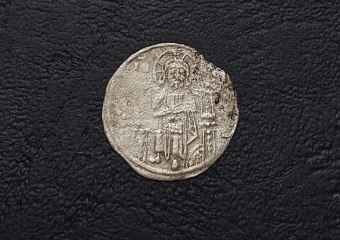04 Jan
On the 6th and 7th of January we celebrate two immportnat Ortodox holidays - Epiphany and St.John's Day
Already from the 3nd century AD there are evidences for the celebration of Epiphany. Up to the 4th century Epiphany was celebrated together with Christmas. The interpretation was that on the day of his baptism in the Jordan waters, Jesus Christ first appeared to the world of public service, as by his birth he appeared to the world in flesh and bones. Later, the church agreed to celebrate the two holidays separately.
<module="photo" id="1598" maxwidth="485" maxheight="600">
[shrink]
The baptism of the Saviour has a deep meaning, which is only partly caught in our icon of Epiphany. In the center of the composition, Jesus Christ is standing in the river waters, and on the riverbank to the right St. John the Baptist is drawn with his hand raised above Jesus' head. The Holy Spirit is represented as a dove descending on a ray of light over the Savior. On the other side are angels glorifying the appearance of the Holy Trinity.
To believers who had the senses to see this miracle - "And when Jesus was baptized, immediately he went up from the water, and behold, the heavens were opened to him, and he saw the Spirit of God descending like a dove and coming to rest on him; and behold, a voice from heaven said, “This is my beloved Son, with whom I am well pleased.”" (Matt. 3:16-17 ) in the Jordanian waters, God really appeared to proclaim the advent of a new world, bringing renewal and cleansing of humanity, through the arrival of His son on Earth. Thus, mankind no longer have to crawl into the ignorant darkness, and will be like a flying bird that soars to its spiritual creator.
<module="photo" id="1599" maxwidth="200" maxheight="300">
God purposely chooses John to submit His "beloved son" as he was the "greatest among those born of women" (Matt. 11:11) and a righteous prophet of God. The teacher should teach the flock and at the same time is obliged himself to live according to his own preaching. Only then he would ascend straight into the sky that opened over Jordan.John the Baptist, this extraordinary man chosen by God, shined with many virtues and possessed such moral purity that he rather could be called an angel than a man. Therefore icon painters depict him with wings over his ascetic clothing of camel wool. His strict abstinence was copied by the great Christian ascetics, and his death inspired all valiant martyrs during the the persecution of the Christian faith. The important mission which he fulfilled and the complete correspondence between words and activity is the cause of the huge tribute to St. John the Baptist. His name is given to millions of people worldwide and his iconography image stands at the right side of Jesus Christ on the iconostasis of every Orthodox church.
Ivanka Deleva - curator at department History of Regional Burgas Museum
*Images: Icons from the collection of Regional Burgas Museum


Comments
comments powered by Disqus